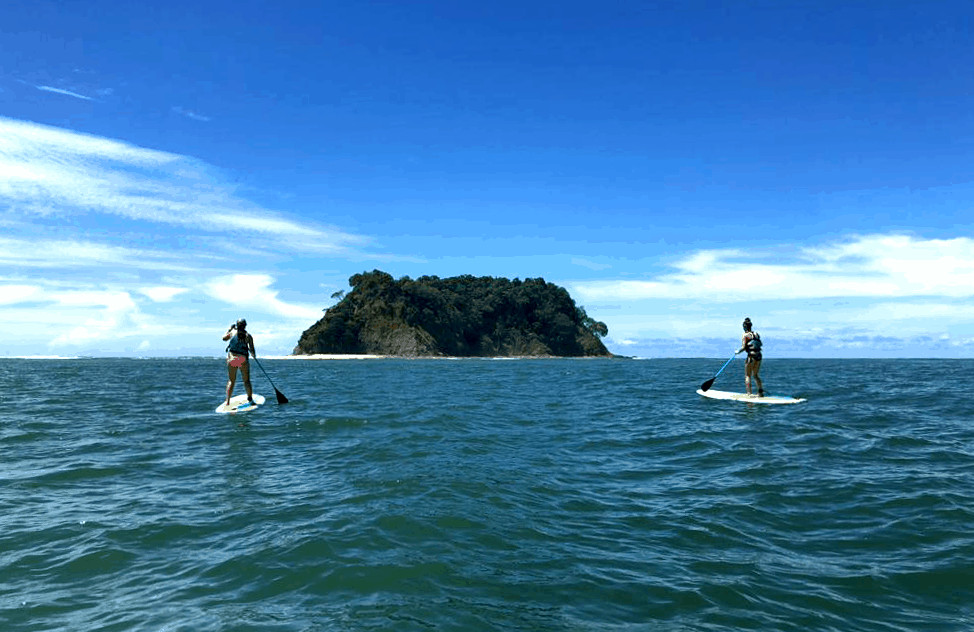The sound of roaring water and the fear in my body drown out the encouraging shouts of my group behind me. I take one unsteady step forward. I am being turned around, my back to the drop, staring into smiling faces not knowing what lies ahead of them. I am forced to set a foot over the edge and start rappelling down a 150-foot-high waterfall.
Starting with the tallest waterfall, I might as well have been thrown headfirst into my fear – but after I surfaced, I was ready to fall deeper. Jumping from waterfall to waterfall, the participants of the Transformational Travel Press Trip, organized by Desafío, Blue Butterfly and Toby Israel, encouraged each other further down the stream and began noticing not only our diminishing fear, but also a sense of solidarity developing within the group.
I looked at a black marble in my hands, threads of gray winding around it. The fear of the unknown spiraling downward increases the more you think about it – a natural human reaction. But if you overcome that fear, you float in a space where possibilities are multiplied. I added the black bead to a chain of others I had already assembled, each one representing an activity carried out on the trip.
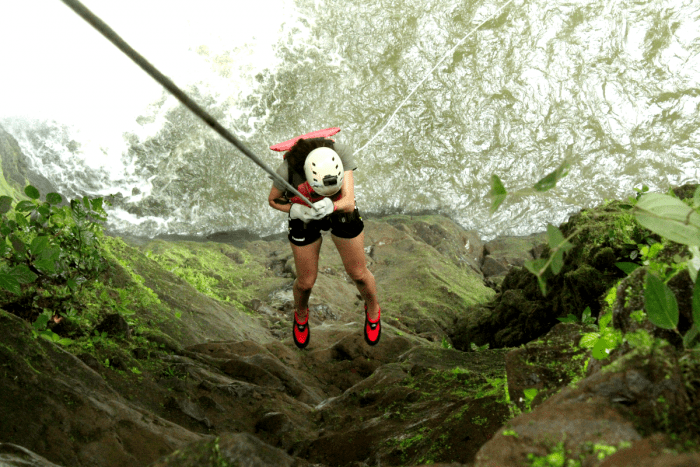
The recently developed term “Transformational Travel” involves experiences designed with the intention of transforming a person, a mindset or a surrounding, or enables participants to transform the people around them.
When the trip began, I had felt misplaced in a crowd of people eager to talk about themselves. Their mouths narrated the stories burning on their surfaces. Other people’s words bounced off of their ears.
We were sitting in a restaurant at the Juan Santamaría Airport, waiting for the last members of the group to arrive. A girl got up from a table across the room, carrying the big backpack that she had been living out of for the past two years, and steered herself toward our table. She a was a full-time freelance travel writer – and she had a lot to say.
“Guys, I’ve been here for three days, staying at a wellness hotel up in Santa Bárbara. I really needed a break from all this traveling!” she said, throwing down her backpack, marking her territory as a professional. I imagined myself in a wellness hotel, unable to relax while counting my money.
***
A life apart from wellness hotels and press trips is the one of people living in Nicoya, Guanacaste. It is one of the currently said to be five Blue Zones worldwide, where residents have a higher life expectancy.
“My grandfather is 85 years old,” said Digna Varela, a nurse from the area, as she showed us a picture of a man looking closer to 60. The oldest member of her family will soon turn 103.
A sports writer and photographer from California asked the question burning on everyone’s tongue: “I don’t want to ask, ‘What’s your secret?’ but why do you live longer than the average person?”
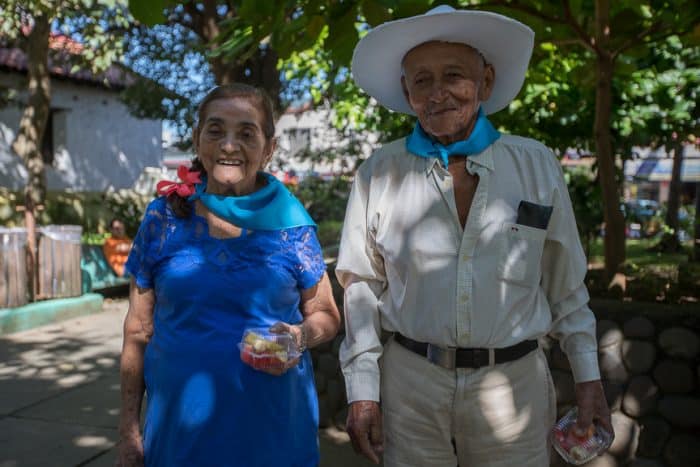
Several factors supposedly play a part in the high life expectancy of people living in Nicoya. One is their diet based on old traditions. Their meals consist mostly of beans, corn, rice and dried meat, prepared without fat. Growing and harvesting that food themselves assures that meals don’t include chemicals and also promotes daily exercise. Another potential factor is the exposure to a healthy amount of sunlight; their skin absorbs the vitamin D, which strengthens their bones and protects them from heart disease and other health issues.
But the biggest factor might be the focus on family and social networks. Under Nicoyan roofs, you can easily find four generations living together. They acknowledge and embrace the importance of family and support each other in every way they can. They build a circle of community, every generation a part of it like different shades of red in a round stone. I added another bead to my chain.
***
“You think she’s successful? C’mon, she still stays at hostels,” one writer said when the conversation at the dinner table turned to gossip about a common influencer. Luckily, not everyone shared her opinion; choosing to stay at a hostel or the fanciest hotel does not define anyone as successful or unsuccessful, famous or insignificant, rich or poor. I felt another moment of misplacement, knowing that I belonged in a hostel with my backpacker friends. But the moment passed quickly as we had already established a sense of community.
That sense of community holds a major significance in the work of the CREAR association in Guanacaste. It aims to transform lives by strengthening social networks and facilitating creative outputs. At the community gathering hall of Sámara, Guanacaste, they have established a space for children to come together and learn English or practice art.
“They do learn English in school, but nowhere near enough. Art classes they don’t get at all,” said Lucy Mahlich Barreto, the administrative coordinator of the organization. Through CREAR, every child gets the opportunity to participate in after-school classes and activities.
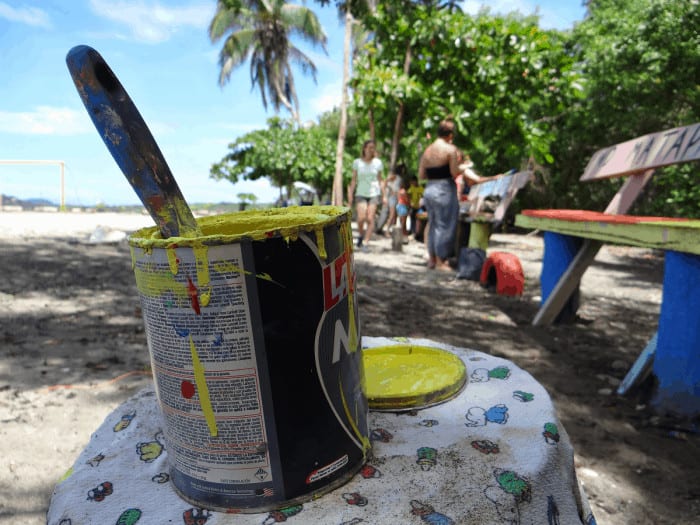
We met about 10 children that day in the residential area of Sámara, known as Matapalo. Some of them were part of a growing organization called Patrulla Ecológica Infantil Matapalo Sámara (Children’s Environmental Patrol of Matapalo, Sámara), and one girl came running up to me to proudly show me its logo on her shirt.
We then started creating signs to encourage people to protect the beach, which – as a community gathering space – is very important in Matapalo. There they have recently built a soccer field, a grandstand and benches, and they continue brainstorming community-involvement initiatives.
“Don’t destroy the plants!” shouted one girl, suggesting a message to write on a sign.
“Don’t destroy the signs!” shouted another boy, breaking the ice by making everyone laugh.
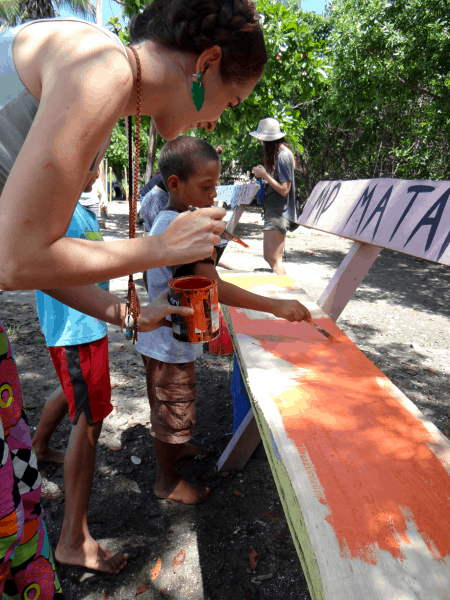
I looked over and noticed that the woman who had criticized a writer for staying at hostels was sliding the brush over our piece of wood, writing “Amamos este lugar” (“We love this place”) in cursive, drawing hearts behind the last word in careful detail.
“Let’s put these cute swirls on them,” she suggested as a way to embellish the sign further. I looked up and saw our group mixed in with the local children, painting in a rage of careful creativity. The comment about the hostels was forgotten.
Adding a green bead, run through by white color as if placed there with a paint brush, to my chain, I was smiling at the memory of the children’s excitement about nature and their desire to protect it.
***
From the children protecting the environment to adults: Juan Sostheim used to own a factory that produced chemicals for cleaning and disinfecting systems. He also helped introduce chemical products into agriculture.
Those days are behind him.
“I just noticed how there was no regard for the environment, there was no regard for the damage that was being done,” said Sostheim, explaining one reason why he had left the factory and chemical industry. But the main reason was the heart attack that he suffered, which was the drastic turning point of his life.
“I was faced with either buying a sailboat and sailing all over the world with my children, or doing something a little bit maybe more meaningful for them in a way that I could enjoy the life that I wanted,” he recalled.
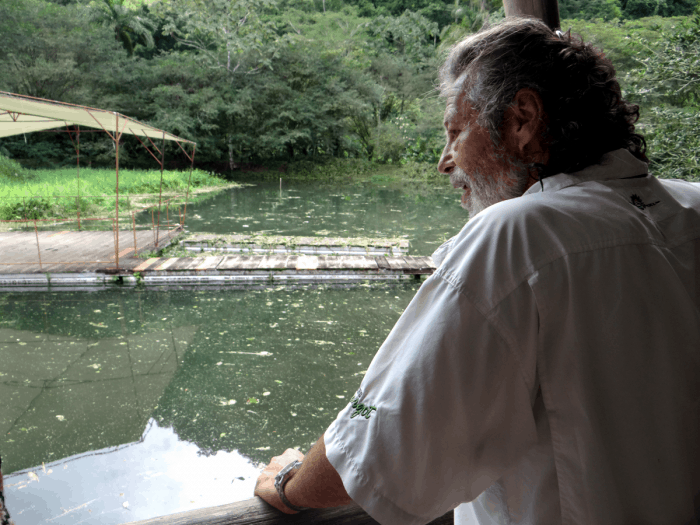
Sostheim chose to buy a property near the southeast shores of Lake Arenal and turned it into Rancho Margot, which he says has been recognized as Costa Rica’s first carbon-negative company. Looking around the ranch – thriving with exotic plants, broad tree trunks, and the sounds of a diversity of birds – it is hard to believe this place used to be nothing more than a plain cattle ranch, 15 years ago.
“I just took off on a mission, like a Don Quixote kind of mission, to go ahead and see if I could rid the world of chemicals,” Sostheim said. “And I’ve been on that track ever since.”
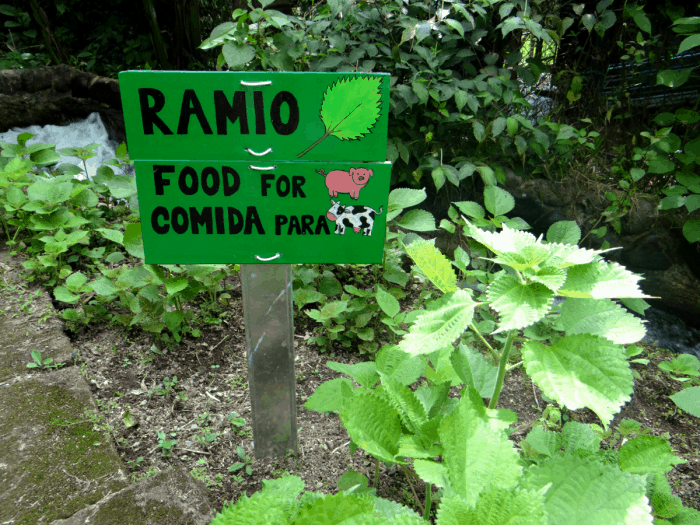
“So that tree is only 15 years old?” a participant asked, pointing at a big trunk, its branches growing above our heads.
“Actually, less than that,” responded Sostheim.
“Wow. That’s crazy,” she said, impressed by what he had managed to build in that short of a time.
After seeing how a perspective can change as much as Sostheim’s did, I picked up a blue, clear bead. It was flat, as people once believed the world to be. It reminds me there are constantly growing and changing perspectives on any given topic.
***
Back in our own lives, we were still working on our personal transformation by participating in different activities. One day during the trip, we had a visit from Teresa Descilo, a U.S. citizen who leads self-healing therapy sessions specializing in people who have suffered from trauma. For this activity I chose a black, simple rock because that is all it was for me: plain dark. While I could mostly relate with her informational introduction of the topic of trauma, the actual therapy session may have backfired on me.
Everyone laid on his or her back, eyes closed, body relaxed. Descilo then turned on some disturbing music, telling us to take a sharp breath in and exhale slowly. As we continued this process for about half an hour, we began hyperventilating ourselves into a state of deep physical and mental pain. I felt tears running down my face and thought, “Wow, this really seems to help. I’m ridding myself of all the bad stuff inside of me” – but perhaps it was just a reaction to the physical pain. I wanted to get up and run out the door, but I was curious to see if this experience would play out the right way in the end.
The next step was a sound therapy, consisting of laying on the floor in silence with our eyes closed, the sound of different pitched bowls enveloping us, “tuning” our organs. I remained still, exhausted from whatever had just happened to me and started dazing off into fractures of dreams.
“Now, slowly open your eyes and find your way back to reality,” Descilo said.
Gradually everyone came back to the space of the room: everyone, that is, except for one participant who seemed to have fallen asleep.
“After the breathing part, I can’t remember anything!” she shouted out.
“You were in that state of meditation,” acknowledged Descilo with a nod.
Shuffling around like a zombie, I felt disconnected from the world for the rest of the night. If I hadn’t been traumatized before, I was now.
***
That unusual and partly uncomfortable experience was just one of the activities that helped me learn more about the other members of the group. Chunk by chunk, I collected insights, emotions, and dreams. While each one of us opened up to the group, I could feel my attitude toward them shift and transform.
“Freelancing is a hard business,” said the writer who had talked about her wellness hotel visit that first day at the airport, admitting that everyone was struggling. Leaning against the edge of the warm pool of our hotel, we got the chance to talk one-on-one. She was looking out at the unsettled ocean, a different person from the one I got to know the first day. What I think had changed the most was not her or me. It was the way we knew each other a little bit better now and understood where the other was coming from.
“I believe that sharing your thoughts with others is an important part of our own process,” explained one of the organizers in the context of thinking about our biggest successes and failures. I believe that sharing your thoughts with others is an important part of their process as well.
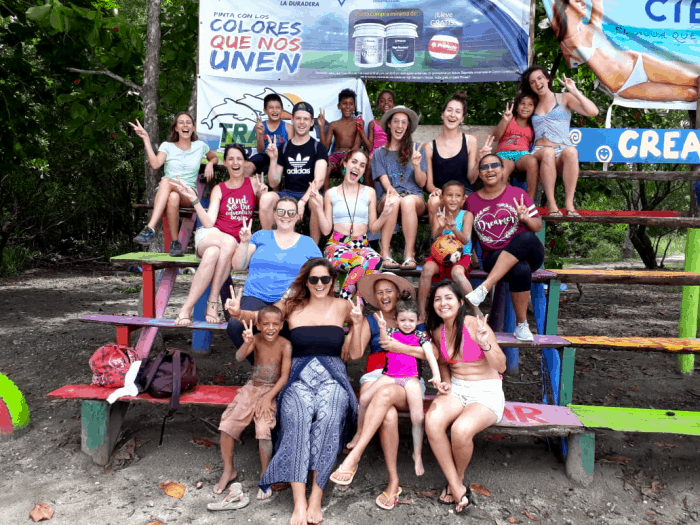
As I added the last bead to my chain, I reflected on the plethora of different shapes, colors and textures. Each one carried a different meaning, a different mood, a different part of what transformation could look like.
Sneaking a glance at the unique collections of beads the other travelers had assembled, I realized they symbolize how everyone needs a different set of experiences to enjoy, to grow and to transform. Not everything works for every person.
But, I believe that at least a little part – a perspective, a view, an attitude – in all of us had shifted. And so we carried that change as we carried our beads back into our lives.
This trip was organized by Desafio Adventure Company, Blue Butterfly Events, Toby Israel, and the Costa Rica Tourism Board.

